Antarctica as an Archive of the Past
Eric Wolff is a Darwin College Fellow and Royal Society Research Professor in the Department of Earth Sciences. Here he talks about what the land ice of Antarctica can tell us about past climate change and looks forward to the future.
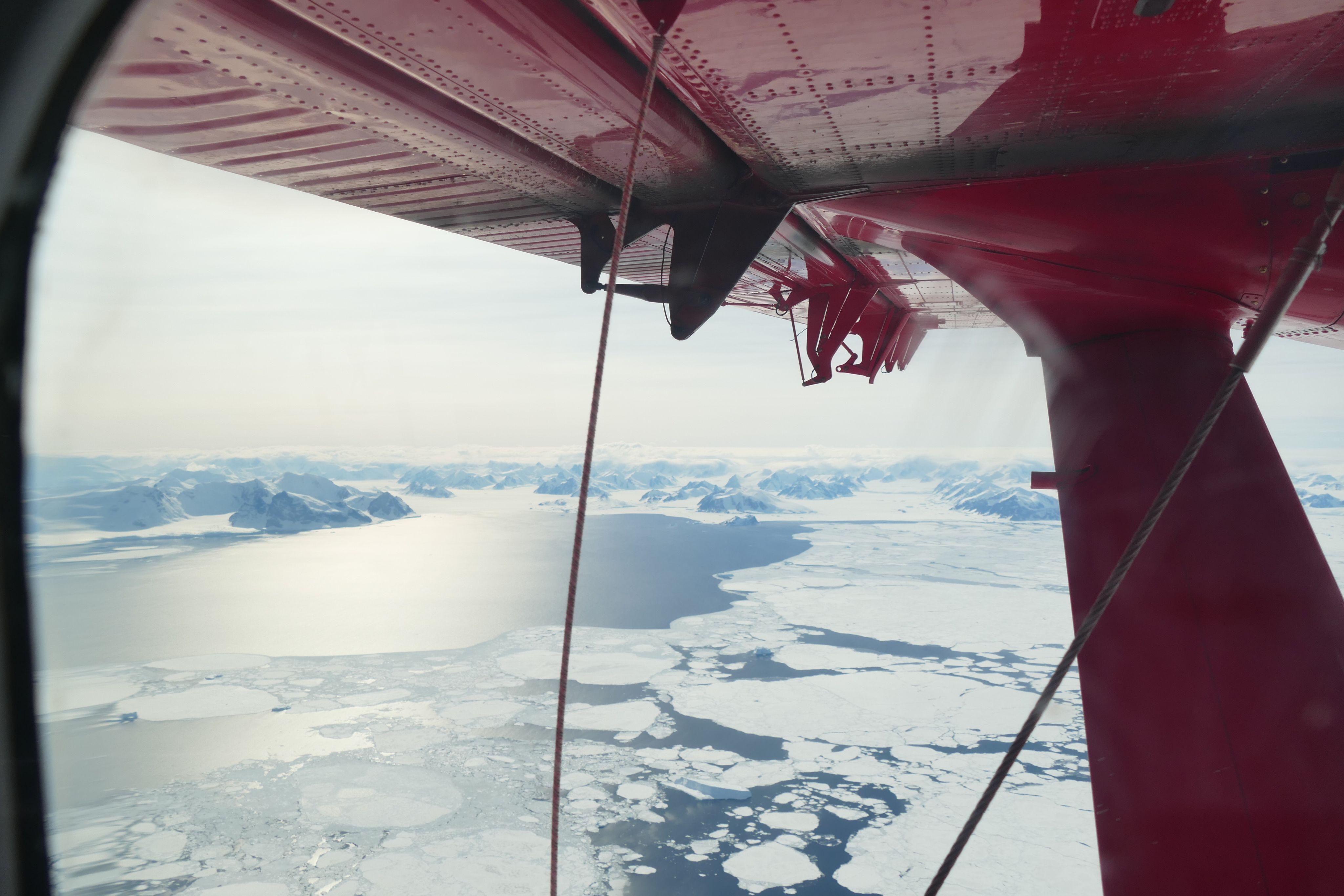
From space we see two types of ice: sea ice and land ice
The most obvious distinguishing feature of the polar regions is ice. Sea ice is a thin veneer of frozen seawater sitting on the surface of the ocean, growing and shrinking in area as the seasons change. We are concerned about the retreat of this ice in the face of warming, not least because, as whitish ice disappears, it gives way to blackish water, which absorbs more sunlight and amplifies the warming.
However my work concerns the second type of ice, land ice sitting as great ice sheets on Greenland and Antarctica. This is the ice that threatens the world with sea level rise.
Land ice is a tremendous resource of information about how climate has changed in the past. The Antarctic ice sheet is up to 4 kilometres thick, and contains enough water that, if it all melted it would raise sea levels by nearly 60 metres. It consists of year upon year of snowfall. The ice that is formed at depth as the snow is squashed together is the medium I and my team work with. It contains an unparalleled archive of the past that allows us to understand why the Earth’s climate changes and perhaps to assess the fate of the ice sheet itself.

The ice contains information in three different forms:
The isotopic ratios (the number of atoms of one elemental isotope relative to another) of different forms of water contains information about temperature at the time the snow fell. The particles and soluble impurities that are trapped with the falling snow hold a record of, among other things, volcanic eruptions, transport of dust from the continents and sea salt from the ocean, and of pollution.
Finally, when the snow turns to ice (typically at 70-100 metres depth) it encloses air bubbles. By cracking those open and analysing the contents we can directly determine atmospheric composition in the past – including how much carbon dioxide (CO2) and methane there was in the air.
The first requirement is to collect the ice. This is done by drilling cores: cylinders of ice, typically 10 centimetres in diameter. Most drilling systems bring up only 1-3 metres of ice each time they are lowered, but by repeating this over and over we can collect cores that cover the full thickness of the ice sheet at any point. Once we have the ice we have to transport it in a continuous cold chain back to the laboratories in Cambridge or elsewhere. The ice is initially sectioned using bandsaws into different cross-sections for a variety of analyses. Many analyses are then done continuously by melting sticks of ice on a hotplate, and then directing the meltwater from the clean central sections into a range of analytical instruments.
There are a few key facts about climate that are routinely repeated but are only known because of ice cores. Routine measurements of greenhouse gases in the atmosphere started in the late 1950s, so it is solely from ice core measurements that we know exactly what the concentration of these gases were before the industrial period, and that CO2 has increased by nearly 50% since 1800.
By going to sites with very little snowfall each year we can go back much further in time. I was one of the leaders of the European Project for Ice Coring in Antarctica (EPICA) that drilled the oldest ice core so far at a site called Dome C, extending back 800,000 years. In this core we see Antarctica cooling by about ten degrees during each glacial period (when there was also ice over northern Europe and most of Canada), with about 11 warmings and coolings in the core. These were no doubt paced by changes in Earth’s orbit around the Sun, but the ice core clearly shows the close coupling of CO2 and temperature, with the CO2 acting as an amplifier as Earth passed in and out of ice ages.
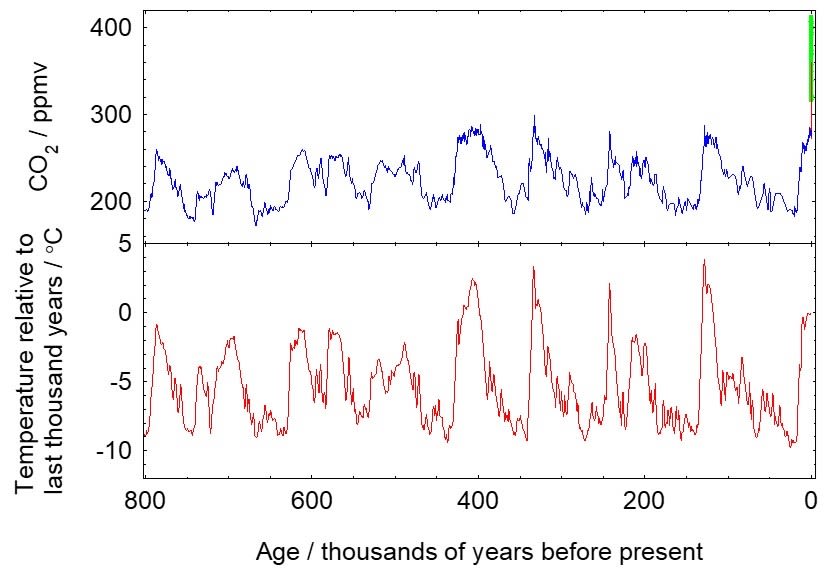
Antarctic temperature and CO2 concentration deduced from ice cores for the last 800,000 years. In the CO2 plot, blue is from the EPICA project, red is from other ice cores, and green is atmospheric data from the last 65 years. The data show CO2 and temperature rising from low values in glacial periods to high values in interglacials such as the present, with unprecedented CO2 concentrations in the past two centuries.
Antarctic temperature and CO2 concentration deduced from ice cores for the last 800,000 years. In the CO2 plot, blue is from the EPICA project, red is from other ice cores, and green is atmospheric data from the last 65 years. The data show CO2 and temperature rising from low values in glacial periods to high values in interglacials such as the present, with unprecedented CO2 concentrations in the past two centuries.
My most recent project saw me make my seventh trip to Antarctica with a team of scientists and engineers from Cambridge University and the British Antarctic Survey. The ‘WArm Climate Stability of West Antarctic ice sheet in the last INterglacial’ (WACSWAIN) project was funded by the European Research Council. It aims to understand what happened to the vulnerable West Antarctic Ice Sheet (WAIS) at a time approximately 120,000 years ago when Antarctica was a little warmer than today, and sea level records suggest part of the ice sheet may have collapsed.
After reaching the UK base at Rothera in late 2018, our team of 6-8 people flew a further 1400 kilometres in a Twin Otter aircraft to a remote location, Skytrain Ice Rise, which lies at nearly 80° south. Here, over a period of about 10 weeks we set up a camp, drilled 651 m of ice, and sent it frozen to the UK. Over the last 3 years, we have cut and analysed the ice. So far, we know that our core does contain ice from 120,000 years ago, and we are assessing what it tells us about the fate of the WAIS under a warmer climate, like the one we are heading into. I am afraid we are still writing this up so this is just a teaser, and I cannot tell you the answer!
Ice cores are exciting because of the unique information they hold. However their full power is revealed when they can be tied to other records from marine and terrestrial archives. The next big project aims to go “Beyond EPICA,” and drill a core reaching well beyond a million years. We need the logistic and scientific power of a European consortium to achieve this, and if all goes well, the million year ice will reach Europe in 2025. The data will complement marine data that show a change in the style of climate change that occurred somewhere around a million years ago. At that time, glacial cycles of 40,000 years long yielded to longer cycles such as the last one that was 120,000 years long. The ice core will help us understand why this happened and in particular what role CO2 may have played in that critical change.
I have been very lucky to visit Antarctica many times and enjoy its fantastic views and the sense of splendid isolation it still evokes. But the continent contains risks for everyone on Earth, with a sea level potential we do not want to unleash. We are fortunate, however, that it also contains such wonderful archives that help us to understand how the Earth works.
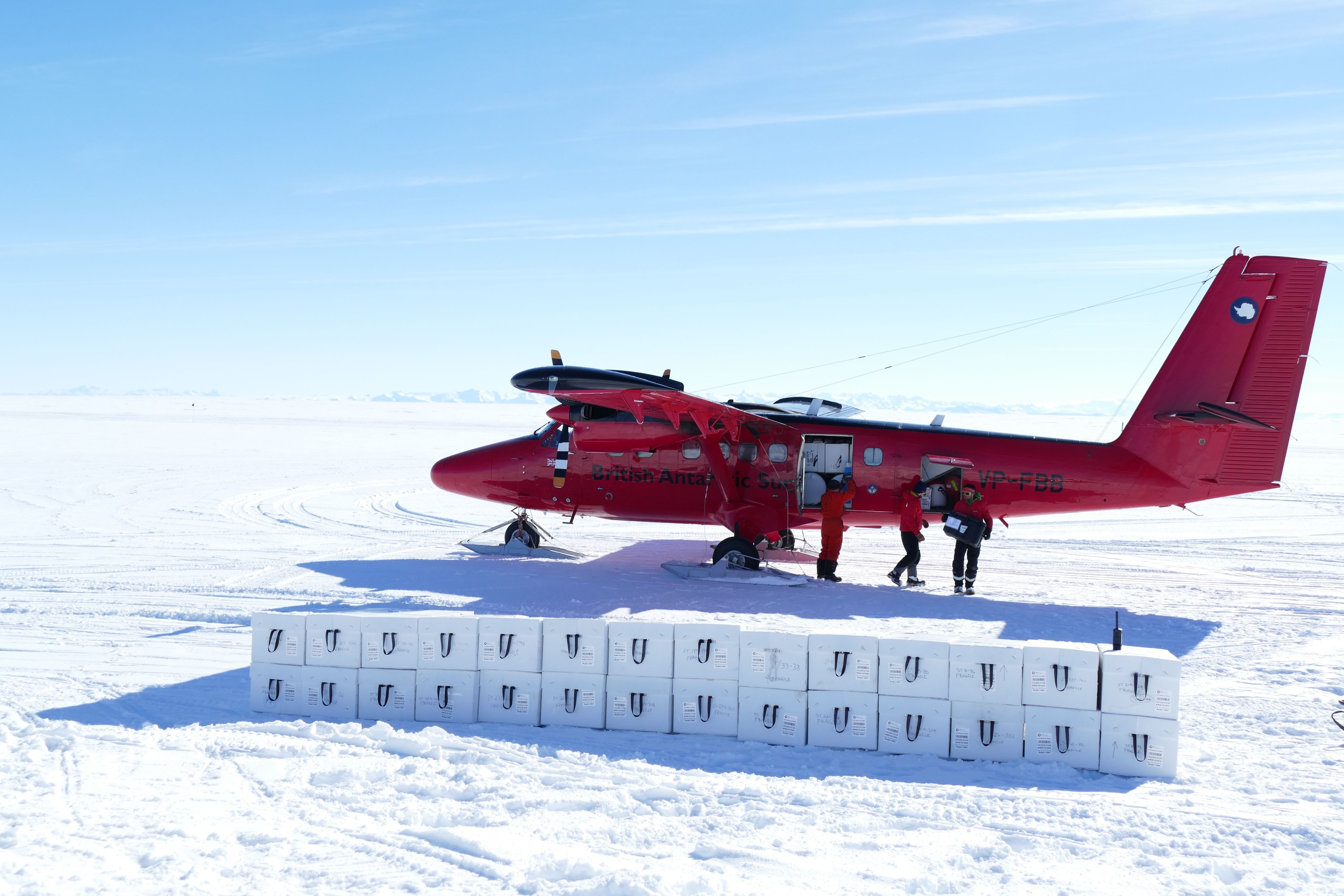
Boxes of ice cores waiting to be loaded into the Twin Otter aircraft at Skytrain Ice Rise, Antarctica.
Boxes of ice cores waiting to be loaded into the Twin Otter aircraft at Skytrain Ice Rise, Antarctica.
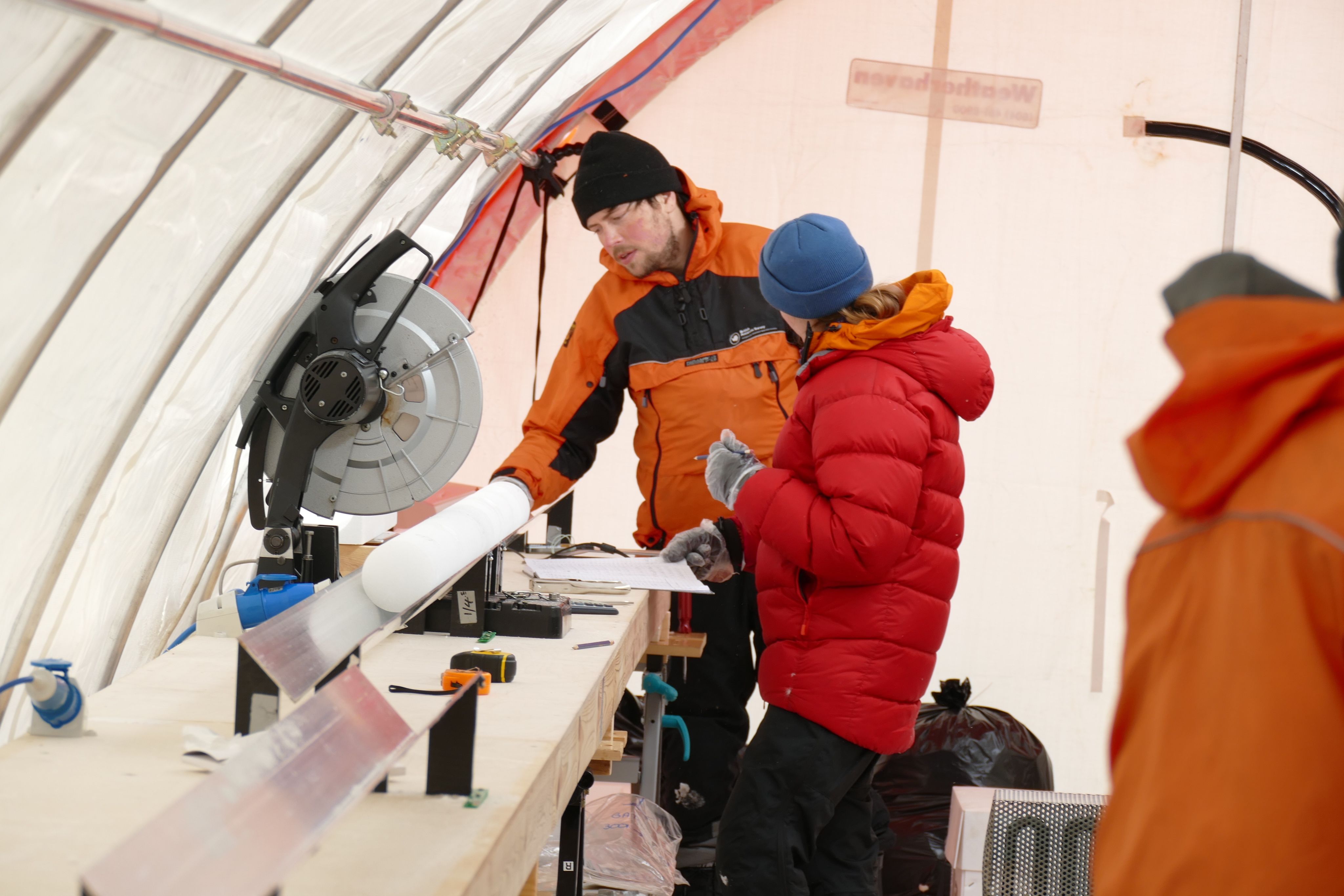
Former Darwin Research Associate Christoph Nehrbass-Ahles and his colleague Mackenzie Grieman cutting an ice core at Skytrain Ice Rise, Antarctica. Photo Credit: Eric Wolff
Former Darwin Research Associate Christoph Nehrbass-Ahles and his colleague Mackenzie Grieman cutting an ice core at Skytrain Ice Rise, Antarctica. Photo Credit: Eric Wolff
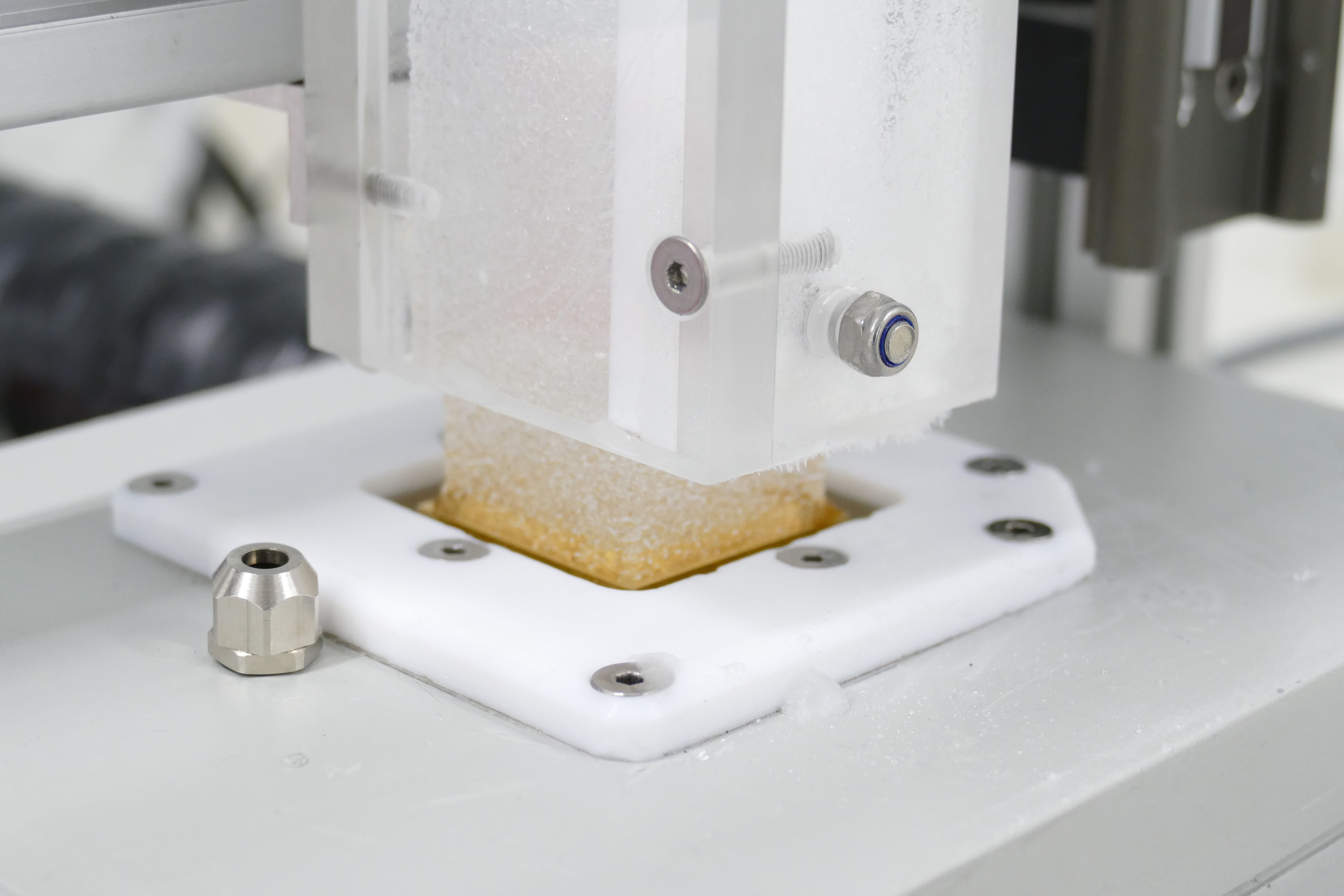
Melting a stick of ice on the melter for laboratory analysis. (Photo by Eric Wolff)
Melting a stick of ice on the melter for laboratory analysis. (Photo by Eric Wolff)
